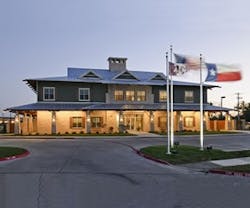When LEED launched in 1993, it represented a major first step toward creating a common definition and measurement standard for green buildings. But in the years since, a new crop of competitors has sprouted in response, seeking to distance themselves from LEED and carve out a niche in the marketplace.
These “boutique certifications” target specific green building elements, from size to building type and beyond, in an attempt to green all sectors of commercial buildings. Can your facility benefit? Get to know the industry’s newest sustainable certification programs – you may find a match.
Founded: 2009
Born from a 2008 strategic planning session with BOMA International’s executive committee, this certification recognizes excellence in building operations and management.
Like other rating systems, BOMA 360 awards points for sustainable practices, but it goes beyond to examine applicants’ performance in life safety, security, and risk management; staff training and education; energy management; and tenant relations and community involvement. It’s open to all commercial facilities and must be renewed every three years.
“Nothing really looked holistically at a commercial property and said, ‘This property is exceptionally run and managed,’” explains Lisa Prats, vice president of communications, marketing, and meetings for BOMA International. “We felt very strongly that we needed to look at not only how the building operates, but also at the people who make it happen.”
Founded: 2009
Commercial buildings at or under 70,000 square feet may find success with Earth Advantage, which caters to what it sees as an underserved audience seeking a green certification that suits their size. To maintain affordability, this system eliminates requirements for energy modeling and commissioning and reduces requests for documentation in favor of on-site verifications.
“Every building should be green rated,” says Rob Curry, Earth Advantage’s program manager. “We’re not in competition with LEED, ENERGY STAR, or Green Globes. The truth is, there’s absolute synergy between some ratings – we recommend getting the ENERGY STAR rating as well as Earth Advantage because they build on each other.”
Founded: 2006
The requirements for the performance-based Living Building Challenge certification leave little room for error – applicants must fulfill each of 20 imperatives to earn full certification, though partial credit (dubbed “Petal Certification” after the rating system’s seven categories, illustrated as flower petals) is possible.
The Challenge’s all-or-nothing approach pushes applicants to get creative as they strive to hit targets that include net zero water and energy usage.
“Our project teams are people who have completed some LEED projects and want to stretch further,” explains Amanda Sturgeon, certification director of the International Living Future Institute, which administers the Living Building Challenge. “Others may not be that familiar with LEED, but they see the urgency for us to transform our society into a more restorative community, and Living Building Challenge fits their personal philosophy.”
National Association of Home Builders Research Center: Green Certified
Founded: 2007
NAHB Research Center: Green Certified judges buildings by their compliance with the International Code Council’s National Green Building Standard. Multifamily buildings are eligible, as are single-family residences.
“When USGBC developed the LEED green building rating standard, a lot of developers felt that it was developed specifically for commercial buildings,” says Michelle Desiderio, director of green building programs at the NAHB Research Center. “Some of it wasn’t applicable, but they wanted to have something they could use.”
The program is designed to be flexible to accommodate all ages, design styles, and climate zones. Over 1,100 points are possible in the National Green Building Standard, and bronze certification starts at just 222.
“Even if you don’t attain certification, the standard can help improve the quality and performance of all buildings,” Desiderio says. “This is a way to move the entire industry forward in a voluntary above-code program.”
Founded: 2010
The Society for Environmentally Responsible Facilities (SERF) grew out of property owner Joe Maguire’s frustration with certifying his own buildings. Maguire, the president and CEO of Wolverine Development Corporation in Michigan, started pursuing green certification for a Grand Rapids property leased by Sprint Nextel, only to run into roadblocks almost immediately.
“I was frustrated by the lack of a clear path or price tag I could put to the process. I tried to get a sense of what resources I would need to devote to this, and it just couldn’t be done,” Maguire says. “It’s not that it couldn’t be certified, it’s that I couldn’t even get a definitive path to where I wanted to go, and I heard experiences from other property owners to the same effect.”
Maguire and other property owners chose a streamlined, low-cost approach for SERF, creating clear requirements and capping the cost of the entire process at $4,000 to $12,000, depending on building size. This strategy appealed to Rick DeKam, principal of Midwest Realty Group, who has obtained SERF certification on two multitenant office buildings, each two stories and 40,000 square feet. He plans to gradually phase in SERF recognition for additional buildings, though its standards continuously evolve to reflect industry changes (as do the other green certification systems).
“There’s nothing static about it – everybody keeps learning more, so the market is teaching itself and learning more about how to do things responsibly every day,” DeKam says. “I don’t think you can have a standard that applies as is for the next 10 to 20 years. A standard has to be something that keeps up with where the market is and is constantly trying to be innovative in figuring out new ways to find savings.”
About the Author
Janelle Penny
Editor-in-Chief at BUILDINGS
Janelle Penny has been with BUILDINGS since 2010. She is a two-time FOLIO: Eddie award winner who aims to deliver practical, actionable content for building owners and facilities professionals.

